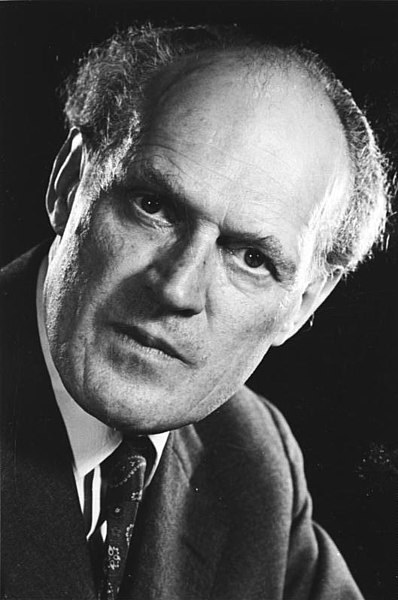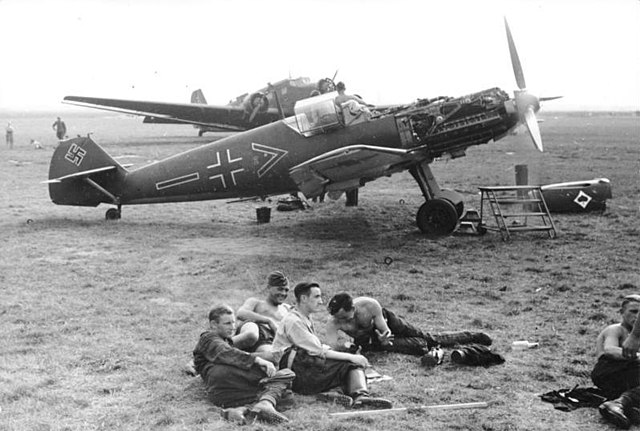Wilhelm Emil "Willy" Messerschmitt was a German aircraft designer and manufacturer. In 1934, in collaboration with Walter Rethel, he designed the Messerschmitt Bf 109, which became the most important fighter aircraft in the Luftwaffe as Germany rearmed prior to World War II. It remains the second most-produced warplane in history, with some 34,000 built, behind the Soviet Ilyushin Il-2. Another Messerschmitt aircraft, first called "Bf 109R", purpose-built for record setting, but later redesignated Messerschmitt Me 209, broke the absolute world airspeed record and held the world speed record for propeller-driven aircraft until 1969. Messerschmitt's firm also produced the first jet-powered fighter to enter service – the Messerschmitt Me 262.
Messerschmitt in 1958
Messerschmitt meets with Erhard Milch (center) and Minister of Armaments and War Production Albert Speer
Portrait by Günter Rittner (1978)
The Messerschmitt Bf 109 is a German World War II fighter aircraft that was, along with the Focke-Wulf Fw 190, the backbone of the Luftwaffe's fighter force. The Bf 109 first saw operational service in 1937 during the Spanish Civil War. It was still in service at the end of World War II in 1945. It was one of the most advanced fighters when it first appeared, with an all-metal monocoque construction, a closed canopy, and retractable landing gear. A liquid-cooled, inverted-V12 aero engine powered it. It was called the Me 109 by Allied aircrew and some German aces, even though this was not the official German designation.
Messerschmitt Bf 109
Messerschmitt Bf 109 V1
A drawing of the V1 prototype
JG 53 Bf 109E-3, c. 1939/1940







